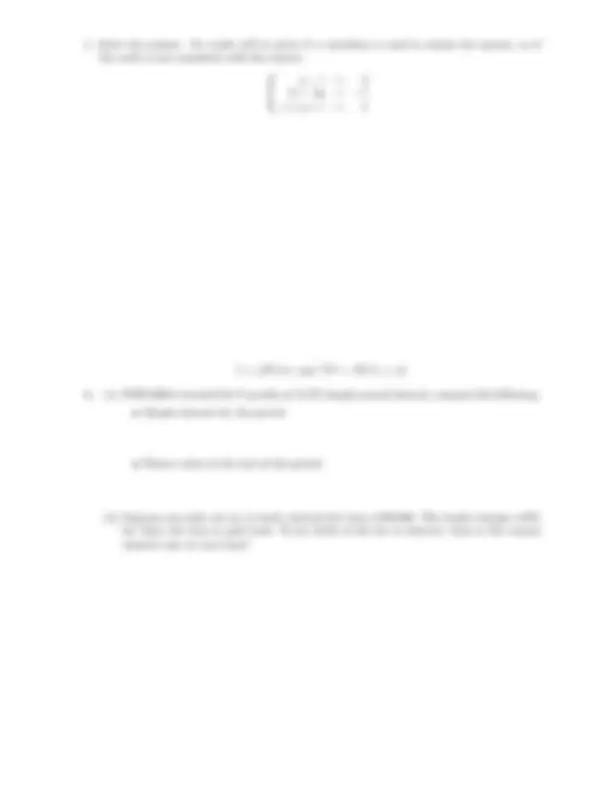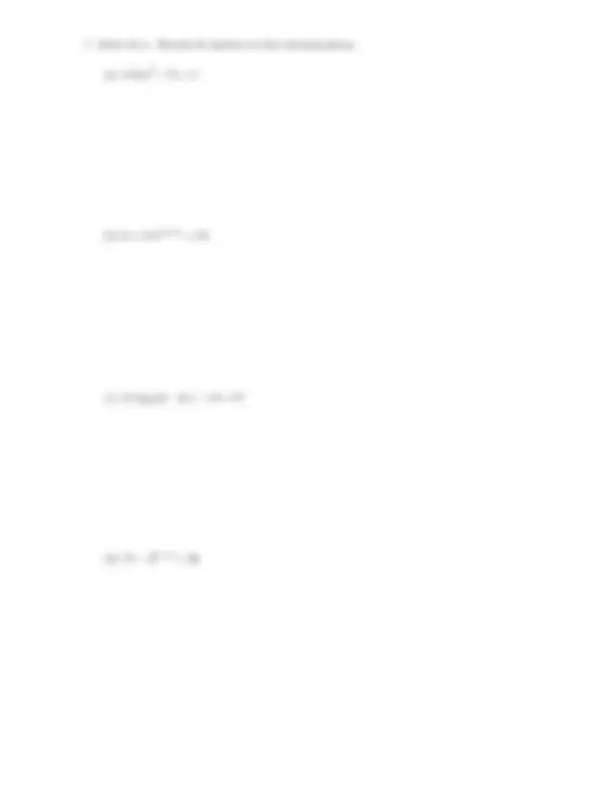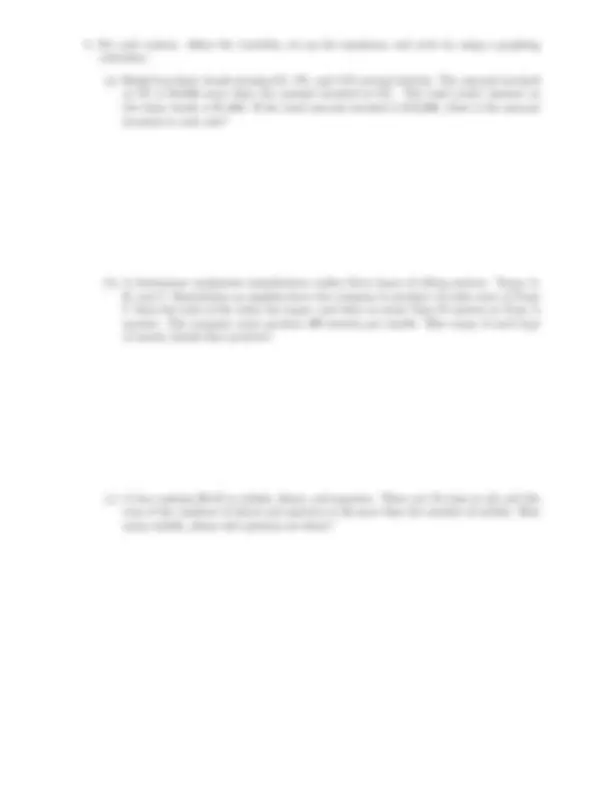





Study with the several resources on Docsity

Earn points by helping other students or get them with a premium plan


Prepare for your exams
Study with the several resources on Docsity

Earn points to download
Earn points by helping other students or get them with a premium plan
Community
Ask the community for help and clear up your study doubts
Discover the best universities in your country according to Docsity users
Free resources
Download our free guides on studying techniques, anxiety management strategies, and thesis advice from Docsity tutors
Material Type: Exam; Professor: Wilson; Class: Math for Social Sciences I (C); Subject: Mathematics; University: University of Texas - El Paso; Term: Unknown 1989;
Typology: Exams
1 / 7

This page cannot be seen from the preview
Don't miss anything!




Math 1320 Name D.Wilson
This review packet is due on the day of Exam #2. Please also study the quizzes, group work, notes, and past WebAssign homeworks.
(a) Find the exponential model y = Abt^ that gives the weight of the material after t years.
(b) What is the material’s half-life? Include the units in the answer.
(a) Find the exponential model y = Abt^ that gives the weight of the material after t years.
(b) How much of the sample was left after 20 years? Include the units in the answer.
(a) Find the exponential model y = Abt^ that gives the number of bacteria in the dish after t hours.
(b) When will there be 10,000 bacteria in the dish? Include the units in the answer.
x 2 −^
y x^4 =^1 4 +^ y^ =^ −^4
(a) Ralph has three bonds earning 6%, 8%, and 12% annual interest. The amount invested at 8% is $5,000 more than the amount invested at 6%. The total yearly interest on the three bonds is $1,880. If the total amount invested is $19,000, what is the amount invested at each rate?
(b) A lawnmower equipment manufacturer makes three types of riding mowers: Types A, B, and C. Restrictions on supplies force the company to produce 10 units more of Type C than the total of the other two types, and twice as many Type B mowers as Type A mowers. The company must produce 490 mowers per month. How many of each type of mower should they produce?
(c) A box contains $8.45 in nickels, dimes, and quarters. There are 70 coins in all, and the sum of the numbers of dimes and quarters is 26 more than the number of nickels. How many nickels, dimes and quarters are there?
(1 + i)n^ − 1 i
and P V = P M T
1 − (1 + i)−n i
(b) Jeremy has $45,000 in a fund that earns 6% annual interest, compounded every two months. Determine the deposits he has to make every two months in order to have $1,500,000 in the fund in 20 years.
(c) The Smiths just purchased a home worth $125,000. They made an $8,000 downpayment, and took out a 30-year loan (mortgage) on the balance. The annual interest on the mortgage is 5.78%, compounded monthly.